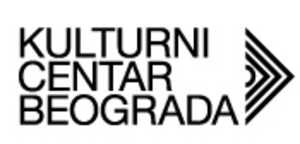






Masaharu Sato // Kulturni Centar Beograda
Photo Reference: Photographic Image in Contemporary Japanese Art Practices
March 27 - April 17, 2012
Artists: Hisaya Taira, Keisuke Shirota, Masaharu Sato and Satoru Aoyama
Exhibition Photo Reference: Photographic Image in Contemporary Japanese Art Practices introduces four Japanese artists who use photography as a starting point in formulation of their work. The conceptual framework bases on the notion of photography as a ‘reference’ to art practices, as formulated
by François Soulages (Esthétique de la photographie, 2005).
This notion is discursively folded with the issues surrounding the use, materiality and signification of photography as well as its relationship with reality within the regime of contemporary visual culture. It aims at questioning the status and understanding of photography as a reliable referent to reality within art practices. Thereon, as this presupposes destabilization of the fixed role of photography as a document of reality, the concept of ‘reference’ extends to the historical relevance of realism in art. From that perspective, understanding realism as a rhetorical convention, this exhibition finally reassesses the relations between contemporary art practices and perception of reality, examining the problematic of visual representation.
Within the particular Japanese context, these questions are addressed through four different media: photorealist canvases by Hisaya Taira, mixed media (acrylic on canvas and photography) in the work by Keisuke Shirota, animation and video installations produced by Masaharu Sato and embroideries
on canvas by Satoru Aoyama.
As a transparent point of intersection between the photographic image and visual art, photorealism that characterizes Hisaya Taira’s work achieves the effect of dislocation by the banalization of visual representation, overstated formal resemblance with the source photograph, as
well as in its translation into the domain of painting. Escalator No 20 (2009) and Nagatacho (2003) depict underground interiors constructing a peculiar atmosphere with the use of framing, choice of perspective and lighting. The depictions are in the given context further dislocated in relation to the
specifically Japanese urban reality they represent. Also, the relationship between the media and representation, between the image and its final operation is further destabilized in the work by Keisuke Shirota. The series A Sense of Distance achieves (re)construction of space in the mixed media, as the
painted canvas surrounding photography simultaneously (re)formulates the question of presence and absence within the photographic frame, stressing its limitations. That the question is relevant for our everyday perception of the world, or the social and political importance of photography, is what
is further underlined in the newspaper pieces. Furthermore, digitization and animation of the photographic image in the work by Masaharu Sato recontextualizes the dialectical function of the image on the level of perception and affect, the experience of reality in space and time. Escalator Girl
(2010) and Bye Bye Come On (2010) use the image repetitively, simulating a movement that also becomes self-reflexive and self-referential. In the video installation Calling (2009), the formal repetition is situated on the level of sequence within a possible fictional narrative. Finally, Satoru Aoyama
collapses visual operation and materiality of two-dimensional image examining its application and potential in the domain of textile. Uncannily detailed Good Morning Tokyo (2005) and Roses 4/6 (2011) achieve this in the process of their making while Maria (2006) and Glitter Pieces No 26 and 27 (2008) take advantage of the display possibilities of the material to further push the boundaries between different media and possible interpretations of visual representation.
The exhibition is produced by MIKSER, with support form the Japan Foundation, in collaboration with the Cultural Centre of Belgrade and is curated by Jelena Stojkovic. It is accompanied with a bilingual (Serbian-English) catalogue.
Biographies:
Hisaya Taira (1960) studies painting at the Tama Art University in Tokyo. He exhibited in solo and group shows in Japan, Korea and China. Long time focus of his work is on depicting urban landscapes that achieve their effect in the choice of everyday scenes without a clear visual and compositional strength or specific meaning. He exclusively works in photorealistic technique.
Keisuke Shirota (1975) graduated in fine arts at the Tokyo National University of Fine Arts and Music. He exhibited in solo and group shows in Japan, Korea, Germany, Austria and Spain. Primarily focusing on working in mixed media (acrylic on canvas and photography) he also uses found newspapers and
video in experimenting with perspective, signification and experience of the image and its social and political relevance.
Masaharu Sato (1973) holds BA and MA in painting from the Tokyo National University of Fine Arts and Music and has studied sculpture in Germany. He exhibited in solo and group shows in Japan, Korea, Taiwan, Germany, Belgium, Netherlands and the US. His working methodology bases on digitization and
animation of photography in video installation pieces.
Satoru Aoyama (1973) holds BA in textiles at the Visual Art Department from Goldsmiths College, University of London and MFA from the Fibre and Material Study Department at the School of the Art Institute of Chicago. He exhibited widely around the world, including solo and group shows in the US, New Zealand, Asia and the UK. He exclusively bases his work on embroidery on canvas, using photography as a starting point.
Jelena Stojkovic (1975) is a curator from Belgrade and a PhD candidate in Art and Media Practices with the University of Westminster in London. She holds BAs in Arabic and Japanese from the University of Belgrade and MA in History of Art from SOAS, London. She previously curated the exhibition Unseen
Japan: Exhibition of Shunga Prints with the Belgrade Heritage House and Anonymous said: (December 2008-January 2009).